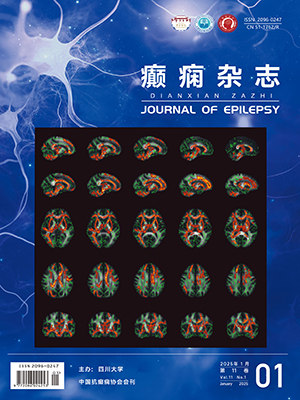| 1. |
Liu X, Zhao Z, Jia C.Insomnia symptoms, behavioral/emotional problems, and suicidality among adolescents of insomniac and non-insomniac parents.Psychiatry Res, 2015, 228(3): 797-802.
|
| 2. |
Becker SP, Langberg JM, Evans SW.Sleep problems predict comorbid externalizing behaviors and depression in young adolescents with attention-deficit/hyperactivity disorder.Eur Child Adolesc Psychiatry, 2015, 24(8): 897-907.
|
| 3. |
Gujar N, Yoo SS, Hu P, et al. Sleep deprivation amplifies reactivity of brain reward networks, biasing the appraisal of positive emotional experiences.J Neurosci, 2011, 31(12): 4466-4474.
|
| 4. |
Baglioni C, Spiegelhalder K, Regen W, et al. Insomnia disorder is associated with increased amygdala reactivity to insomnia-related stimuli.Sleep, 2014, 37(12): 1907-1917.
|
| 5. |
Wilhelm I, Diekelmann S, Born J.Sleep in children improves memory performance on declarative but not procedural tasks.Learn Mem, 2008, 15(5): 373-377.
|
| 6. |
Prehn-Kristensen A, Munz M, Molzow I, et al. Sleep promotes consolidation of emotional memory in healthy children but not in children with attention-deficit hyperactivity disorder.PLoS One, 2013, 8(5): e65098.
|
| 7. |
Riemann D, Spiegelhalder K, Feige B, et al. The hyperarousal model of insomnia: a review of the concept and its evidence.Sleep Med Rev, 2010, 14(1): 19-31.
|
| 8. |
Riedner BA, Goldstein MR, Plante DT, et al. Regional patterns of elevated alpha and high-frequency electroencephalographic activity during nonrapid eye movement sleep in chronic insomnia: a pilot study.Sleep, 2016, 39(4): 801-812.
|
| 9. |
Tordjman S, Anderson GM, Kermarrec S, et al. Altered circadian patterns of salivary cortisol in low-functioning children and adolescents with autism.Psychoneuroendocrinology, 2014, 50(12): 227-245.
|
| 10. |
Tordjman S, Anderson GM, Pichard N, et al. Nocturnal excretion of 6-sulphatoxymelatonin in children and adolescents with autistic disorder.Biol Psychiatry, 2005, 57(2): 134-138.
|
| 11. |
Malow BA, Adkins KW, Reynolds A, et al. Parent-based sleep education for children with autism spectrum disorders.J Autism Dev Disord 2014, 44(1): 216-228.
|
| 12. |
Taibi DM, Landis CA, Vitiello MV.Concordance of polysomnographic and actigraphic measurement of sleep and wake in older women with insomnia.J Clin Sleep Med, 2013, 9(3): 217-225.
|
| 13. |
Meltzer LJ, Mindell JA.Systematic review and meta-analysis of behavioral interventions for pediatric insomnia.J Pediatr Psychol, 2014, 39(8): 932-948.
|
| 14. |
de Bruin EJ, Bogels SM, Oort FJ, et al. Efficacy of cognitive behavioral therapy for insomnia in adolescents: a randomized controlled trial with internet therapy, group therapy and a waiting list condition.Sleep, 2015, 38(12): 1913-1926.
|
| 15. |
Morin CM, Bootzin RR, Buysse DJ, et al. Psychological and behavioral treatment of insomnia: update of the recent evidence (1998-2004).Sleep, 2006, 29(11): 1398-1414.
|
| 16. |
Rossignol DA, Frye RE.Melatonin in autism spectrum disorders: a systematic review and meta-analysis.Dev Med Child Neurol 2011, 53(9): 783-792.
|
| 17. |
Petit D, Touchette E, Tremblay RE, et al. Dyssomnias and parasomnias in early childhood.Pediatrics, 2007, 119(5): 1016-1025.
|
| 18. |
Petit D, Pennestri MH, Paquet J, et al. Childhood sleepwalking and sleep terrors: a longitudinal study of prevalence and familial aggregation.JAMA Pediatr, 2015, 169(7): 653-658.
|
| 19. |
Terzano MG, Parrino L.Origin and significance of the cyclic alternating pattern (cap).Review article.Sleep Med Rev, 2000, 4(1): 101-123.
|
| 20. |
Horvath A, Papp A, Szucs A.Progress in elucidating the pathophysiological basis of nonrapid eye movement parasomnias: not yet informing therapeutic strategies.Nat Sci Sleep, 2016, 8: 73-79.
|
| 21. |
Bassetti C, Vella S, Donati F, et al. SPECT during sleepwalking.Lancet, 2000, 356(9228): 484-485.
|
| 22. |
Dang-Vu TT, Zadra A, Labelle MA, et al. Sleep deprivation reveals altered brain perfusion patterns in somnambulism.PLoS One, 2015, 10(8): e0133474.
|
| 23. |
Licis AK, Desruisseau DM, Yamada KA, et al. Novel genetic findings in an extended family pedigree with sleepwalking.Neurology, 2011, 76(1): 49-52.
|
| 24. |
Manni R, Terzaghi M.Comorbidity between epilepsy and sleep disorders.Epilepsy Res, 2010, 90(3): 171-177.
|
| 25. |
Parisi P, Bruni O, Pia Villa M, et al. The relationship between sleep and epilepsy: the effect on cognitive functioning in children.Dev Med Child Neurol, 2010, 52(9): 805-810.
|
| 26. |
Derry CP, Harvey AS, Walker MC, et al. NREM arousal parasomnias and their distinction from nocturnal frontal lobe epilepsy: a video EEG analysis.Sleep, 2009, 32(12): 1637-1644.
|
| 27. |
Silber MH, Krahn LE, Olson EJ, et al. The epidemiology of narcolepsy in Olmsted County, Minnesota: a population-based study.Sleep, 2002, 25(2): 197-202.
|
| 28. |
Longstreth WT Jr, Koepsell TD, Ton TG, et al. The epidemiology of narcolepsy.Sleep, 2007, 30(1): 13-26.
|
| 29. |
史亮, 马铁, 白洁, 等.视频脑电图对发作性睡病的诊断(附3例报告)癫痫与神经电生理学杂志, 2015, 24(2): 104-107.
|
| 30. |
Aran A, Lin L, Nevsimalova S, et al. Elevated anti-streptococcal antibodies in patients with recent narcolepsy onset.Sleep, 2009, 32(8): 979-983.
|
| 31. |
Han F, Lin L, Warby SC, et al. Narcolepsy onset is seasonal and increased following the 2009 H1N1 pandemic in China.Ann Neurol, 2011, 70(3): 410-417.
|
| 32. |
Kornum BR, Pizza F, Knudsen S, et al. Cerebrospinal fl uid cytokine levels in type 1 narcolepsy patients very close to onset.Brain Behav Immun, 2015, 49(5): 54-58.
|
| 33. |
史亮, 马铁, 刘永红.发作性睡病的临床研究进展.临床神经病学杂志, 2015, 28(5): 394-395.
|
| 34. |
Han F, Lin L, Li J, et al. TCRA, P2RY11, and CPT1B/CHKB associations in Chinese narcolepsy.Sleep Med, 2012, 13(3): 269-272.
|
| 35. |
Komum BR, Faraco J, Mignot E.Narcolepsy with hypocretin/orexin deficiency, infections and autoimmunity of the brain.Curr Opin Neurobiol, 2011, 21(6): 897-903.
|
| 36. |
Kim SJ, Lyoo IK, Lee YS, et al. Increased GABA levels in medial prefrontal cortex of young adults with narcolepsy.Sleep, 2008, 31(3): 342-347.
|




